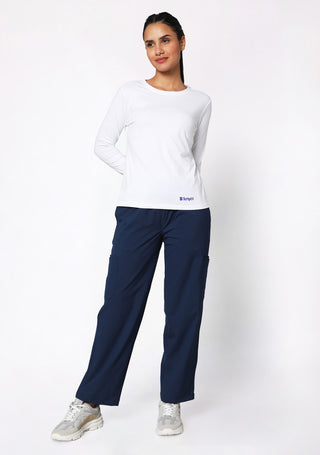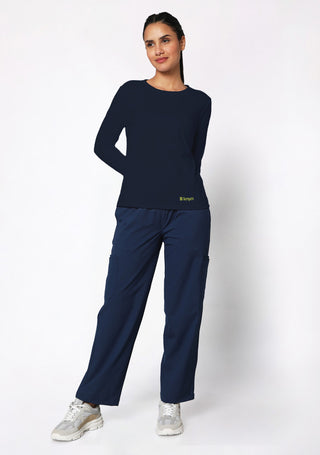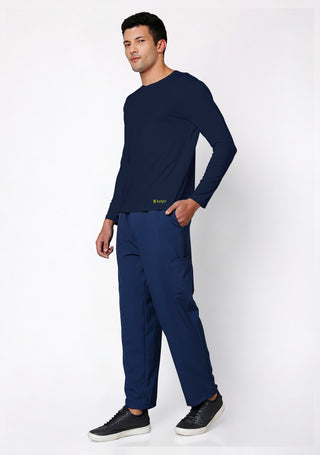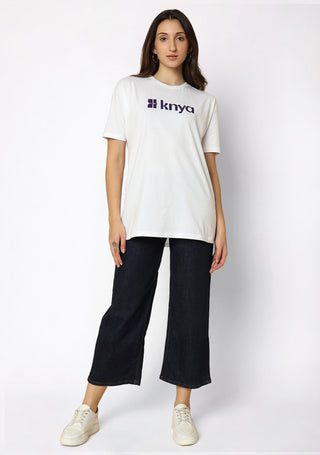Hospital scrubs are more than just workplace attire — they are an integral part of a healthcare professional’s toolkit. Designed with practicality, hygiene, and comfort in mind, scrubs have evolved from simple garments to a carefully engineered uniform with important clinical and psychological functions.
What are Hospital Scrubs?
Hospital scrubs are sanitary clothing worn by medical professionals in clinical or surgical settings. Typically consisting of a short-sleeved shirt (top) and drawstring or elastic-waist pants (bottom), scrubs are designed to be simple, functional, and easy to clean. Originally, the term “scrubs” referred to the act of “scrubbing in” before surgery, but over time it has come to refer to the entire uniform worn by healthcare staff.
The Purpose of Scrubs
Scrubs serve several important purposes in a medical environment:
-
Hygiene and Infection Control
One of the main functions of scrubs is to help maintain cleanliness and prevent the spread of infections. Made from easily washable materials, scrubs can be laundered at high temperatures to kill bacteria and viruses, which is essential in environments where contamination risk is high.
-
Identification and Professionalism
Scrubs help distinguish healthcare workers from patients and visitors, making it easier for people to identify roles within the hospital. In many institutions, color-coded scrubs differentiate between departments — for example, blue for surgery, green for emergency, and pink for maternity.
-
Practicality and Comfort
Medical professionals often work long shifts and perform physically demanding tasks. Scrubs are designed to offer maximum comfort and mobility. Their loose fit, breathable fabric, and functional pockets make them ideal for long hours and constant movement.
-
Safety
Scrubs can act as a barrier between healthcare workers and hazardous substances, such as bodily fluids or chemical disinfectants. In surgical settings, they’re often used in conjunction with gloves, masks, and gowns to ensure maximum protection.
The Evolution of Scrubs
The concept of specialized medical clothing is relatively recent in the long history of medicine.
- Pre-20th Century: Doctors wore their everyday clothes during surgery, often with an apron.
- Early 1900s: As the importance of antisepsis became clear, white coats and sterile gloves were introduced.
- 1940s–50s: Hospitals began encouraging staff to wear white or light-colored uniforms for visibility and hygiene.
- 1970s Onwards: The modern scrub outfit was developed, with a shift to colored garments (often green or blue) in operating rooms to reduce glare and provide contrast with the red of blood.
Today, scrubs have become a universal symbol of healthcare and are standard attire in nearly all hospitals and clinics.
Discover the best lab coat designed for comfort and protection. Shop from here
Types of Scrubs
Though often seen as a basic shirt-and-pants combo, scrubs come in various styles suited to different roles:
-
Basic Scrub Sets:
The most common style, including a V-neck top and straight-leg pants with a drawstring or elastic waistband. -
Surgical Scrubs:
These are often made from higher-grade, antimicrobial materials. They are typically provided and laundered by the hospital for sterility. -
Scrub Dresses:
Less common today but still used in some places, especially in nursing. These resemble traditional dresses but follow the same hygienic principles as regular scrubs. -
Maternity Scrubs:
Designed with adjustable waistbands and extra room in the abdominal area for pregnant healthcare workers. -
Fashion or Designer Scrubs:
Increasingly popular, these scrubs come with tailored fits, modern patterns, and stylish cuts while still adhering to workplace regulations.
Materials Used in Scrubs
Scrubs must strike a balance between comfort, durability, and hygiene. Common materials include:
- Cotton: Breathable and soft, but may wrinkle and shrink after washing.
- Polyester: Durable and wrinkle-resistant, but less breathable.
- Cotton-Poly Blends: The most common option, offering the benefits of both fabrics.
- Spandex/Elastane Blends: Added for stretchability in performance scrubs that require greater mobility.
Many hospitals are moving toward antimicrobial fabrics, which have been treated to resist bacterial growth and odor.
Tired of stiff, uncomfortable scrubs? Order the best jogger scrubs here and experience the difference
Color Coding and Meaning
Color coding in scrubs is a way to differentiate roles and departments in a healthcare facility. While there's no universal standard, many institutions adopt the following:
- Blue/Green: Surgeons, surgical techs
- Light Blue: Nurses
- Maroon or Burgundy: Support staff
- White: Lab technicians or administrative staff
- Pink/Purple: Pediatrics or maternity
- Black: Management or specialized consultants
Color coding helps patients identify personnel easily, adds visual organization to busy settings, and creates a more comforting environment.
Personalization and Customization
As scrubs become more mainstream, many healthcare professionals now choose personalized scrubs. Embroidered names, logos, and patches are commonly added for identity or branding. Some even select specific styles that reflect their personality, helping them feel more confident during demanding shifts.
Scrubs Beyond Hospitals
Interestingly, scrubs are no longer exclusive to hospital hallways:
- Veterinary Clinics: Vets and vet techs wear scrubs due to similar hygiene requirements.
- Dentists and Dental Hygienists: They use scrubs to avoid contamination and maintain a professional look.
- Cosmetic Clinics and Spas: Staff wear scrubs for a clean, sterile appearance.
- Lab Technicians and Researchers: Comfortable and easy to clean, scrubs have become popular in scientific environments.
Scrubs are also increasingly worn as loungewear or sleepwear, thanks to their softness and relaxed fit.
Scrub Care and Maintenance
Proper maintenance of scrubs is essential to retain their function:
- Separate from Regular Laundry: Always wash scrubs separately to avoid spreading contaminants.
- Use Hot Water and Disinfectants: This helps kill bacteria, especially after exposure to bodily fluids.
- Dry Thoroughly: Ensures that no moisture is retained, which can harbor germs.
- Avoid Fabric Softeners: They may reduce the effectiveness of antimicrobial properties.













